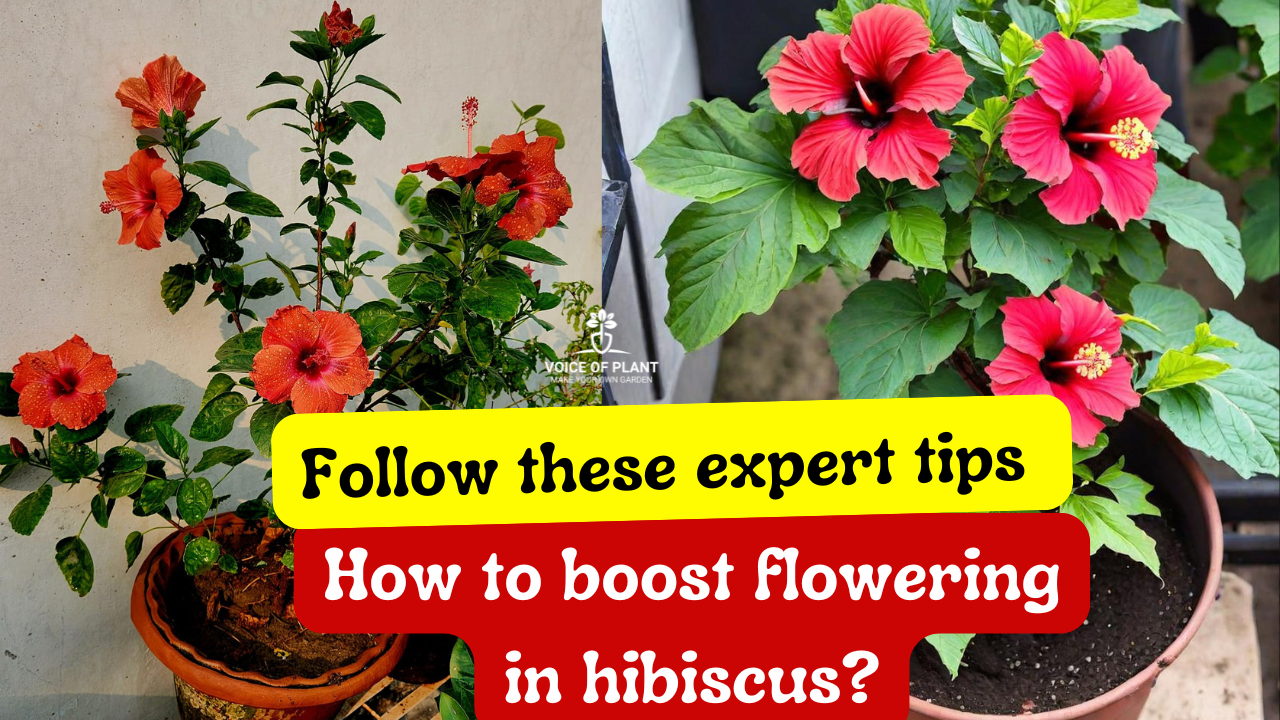How to Get Maximum Flowering in Hibiscus
Every flowering plant naturally tends to bloom, and if a hibiscus fails to do so for 2-3 months, it becomes a cause for concern. Typically, an underlying problem or issue is responsible for the lack of blooming. Therefore, the primary focus should be on identifying the problem before applying any treatment to the plant. Always refer to the checklist below to ensure all the plant’s requirements are being met.
How to Get Maximum Flowering in Hibiscus
Sunlight requirement
Hibiscus, renowned for its large flowers, necessitates a minimum of 5-6 hours of direct sunlight to promote blooming on all pruned branches.
- This plant requires a substantial amount of energy to bloom, and if it receives only 1-2 hours of sunlight exposure, successful blooming may be hindered.
Soil composition
The primary requirement for the growth of any plant is suitable soil.
- It is crucial that the soil is not clayey, and any signs of algae formation should be addressed by tilling it.
- To enhance the soil’s nutritional content and promote a looser texture, incorporate vermicompost.
- For strong root development, the soil should possess an effective drainage system and not be compacted.
Water requirement
Excessive watering in hibiscus can result in root rot and hinder flower blooming.
- If overwatered, buds may form but will ultimately drop without blossoming.
- Conversely, insufficient watering can lead to the plant’s demise, with no chance of blooming and eventual withering.
“It is crucial to provide a balanced water supply for hibiscus—water when the soil is dry and ensure watering until excess water drains out from the bottom of the pot.”
Pest attack in Hibiscus plant
Examine the plant for potential insect infestations, as hibiscus plants are susceptible to attacks from pests such as aphids, mealybugs, and other insects.
- These dense plants may conceal pests, making early detection challenging.
Use of Neem Oil
Inspect for leaf miners and other pests, and be vigilant for potential soil issues such as fungal infections or diseases. Safeguard against these pest attacks by thoroughly spraying the entire plant with neem oil.
- To address soil diseases, if present, create a mixture of neem oil and a small amount of cinnamon powder in water and administer it to the soil.
Pot Size for Hibiscus plant
While hibiscus typically thrives in a 10-12 inch pot, if, despite addressing the previously mentioned considerations, the plant fails to bloom, it is crucial to thoroughly inspect the pot for potential root binding.
- Although hibiscus tends to appreciate being slightly root-bound, excessive binding can induce stress.
- To assess this, carefully remove the plant from its pot, examine the roots, and if necessary, engage in root pruning.
- Transplant the hibiscus into a larger pot to provide ample space, fostering optimal growth conditions. It will start flourishing again.
Soft pruning of Hibiscus plant
Generally, it is advised to conduct hard pruning on hibiscus in February, while soft pruning can be carried out year-round, excluding the harsh winter months.
If your hibiscus is not producing blooms, consider soft pruning and follow up with a diluted mustard cake liquid fertilizer to replenish soil nutrients to promote the development of new branches.
“It is important to refrain from giving the mustard cake liquid fertilizer during extremely hot summers.”
- The diluted form of mustard cake liquid fertilizer is recommended due to its potency.
- When pruning is performed, hormones are released at the pruned tips, stimulating the growth of fresh branches.
Lack of Nutrients
If, despite pruning, your hibiscus is not blooming as expected, it likely indicates a nutrient deficiency. To address this, apply Epsom salt to the entire plant.
Banana peel fertilizer:
After 10 days of the Epsom salt treatment, nourish the plant with a liquid fertilizer made from banana peel fertilizer. This particular fertilizer enhances the flowering process, and you will likely notice the emergence of new buds shortly after application.
Read article on:
How to make Banana peel fertilizer
Onion peel liquid fertilizer:
Following the banana peel fertilizer, wait for another 10 days and then give onion peel liquid fertilizer to the plant.
- This fertilizer also promotes flower blooming, and you can expect to see new buds appearing within a few days.
Note:
- In instances where the leaves of the blooming plant turn yellow, it is an indication of a need for more nutrients.
Cow dung liquid fertilizer
- After 10 days of the onion peel fertilizer, provide the plant with a liquid fertilizer made from cow dung.
Read article on:
How to make Cow dung fertilizer
Note:
- By adhering to this schedule of applying different liquid fertilizers every 10 days, you can stimulate consistent blooming in your hibiscus.
Increase the dosage of fertilizer after thoroughly inspecting all the concerns mentioned above. To cure the main problem is necessary to promote the blooming in plants rather than applying random theories of experiments.
As living entities, plants require a well-balanced diet consisting of sunlight, water, air, and essential nutrients. It is crucial to meticulously monitor and fulfill each of these requirements to ensure the effective growth and flourishing of the plant.
Once the plant is blooming at the anticipated rate, reduce the fertilizer dosage, as an excessive amount may adversely affect the plant. It is advisable to adhere to the hierarchical checklist mentioned earlier before administering any remedies to the plant.
Follow our Social media channel:
1. Voice of Plant – YouTube Channel
2. Voice of Plant Facebook Page
3. Instagram Voice of Plant Channel
Happy Gardening!!
